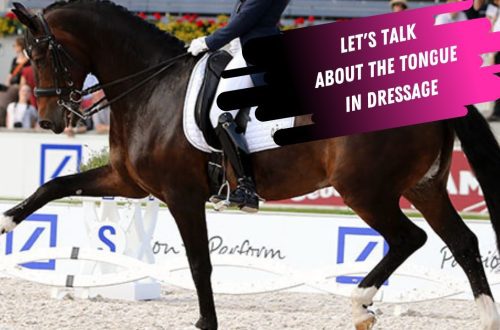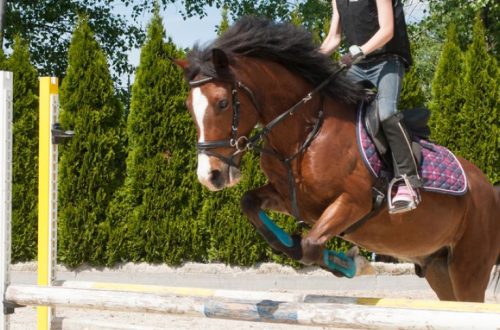
Modern Disguise: Sugar Paste Cream to Conceal Iron Damage

Photo: Eurodressage.com.
More and more often you can see horses entering the international arena with a lot of white cream on their lips. Previously, pieces of sugar or apples were used to stimulate chewing; now they use a cream of sugar paste to hide iron damage.
Camouflage cream is now in trend.
The reporter of Eurodressage.com says: I first saw this “chip” at the 2016 Olympics in Rio on one world-famous horse with a top rider. A year later, I met a similar paste at a tournament in Aachen with a rider, and also with his student. I was very surprised why none of the stewards even noticed this camouflage cream. Then in 2019 at the European Dressage Championships in Rotterdam, another top 15 horse in the world with a similar lip cream. A month ago I spotted him on two horses at the CDI 5* event in Wellington. I paid attention to the reaction of the stewards. One FEI Steward carefully checked and fingered the white cream that had been applied from the corners of the mouth and all over the lips, but saw nothing illegal. Я ничего не мог поделать, но интересно, как FEI разрешает подобное? Professional trick?
I have seen this white cream only in horses that had lesions on their lips. The paste has been applied to horses that open their mouths wide or stick out their tongues as a sign of discomfort and/or lack of contact. There is another feature of the same plan: painting over the skin to hide traces of spurs. A dark shoe polish is applied to the horse’s skin. The stewards say that this is a very common practice, although it is prohibited by the FEI rules. However, after reviewing the rules, I could not find any direct mention of these masking agents. So maybe they are all allowed? Что же говорится в правилах FEI по выездке?
I asked this question to Jacques Van Dael, 4* dressage judge (Belgium) and steward FEI, he is an official at many international championships (as chief steward or technical delegate).
“Covering up spur marks with black cream is of course NOT allowed, neither in the brood nor in the tournament.” Van Dael says. “This is stated in article 428/5 of the rules.” “We need to identify this in the brood and report to the President of the Jury. If this is found on the haul, the steward must take a photograph of the damage and pass the photo on to the President of the Jury.” As for the sugar paste cream, Van Dael answered ambiguously: “You shouldn’t put on anything to hide something, especially damage. It’s not fair,” says Dael. It is logical that if the steward notices the cream, he will report to the President of the Jury and take a photo. The opinion of the veterinarian will also matter. I also asked another famous steward FEI, what article forbids this, and he pointed to article 428/6.4 of the dressage rules: “any means of camouflage on the horse is prohibited.”
Obviously there are no hard and fast rules, and the steward admits this: “there is nothing specific about this in the rules in the rules, and also in the steward’s manual, we rely on common sense.”
Let’s look at the FEI Veterinary Rules
The veterinary rules are more specific about the prohibition of camouflage on the horse’s body, but they are used only in the show, not in the tournament. Rule 1037/8.9 of the FEI Veterinary Rules states: “The horse must not be subjected to any type of coloring agent that interferes with identification – paints for example.” The rule is more about identifying the horse, not about masking physical damage. However, article 1047 of the Veterinary Rules states that a steward or veterinary representative has the right to test a horse “at any time during the Event” and check “for the presence of prohibited substances and the presence of traces of blood on the legs, flanks or lips of the horse.” (1047/5 point d.and e.) If any prohibited substance is found, the steward and veterinarian must conduct a check. Rule 1047/11 states: “suspicious items (bandages, tapes, various substances applied to the skin, etc.) must be sent to the FEI laboratory.” The rule confirms that a steward or veterinarian can carry out a check, and those riders who use white paste for medicinal purposes must declare it. The paste itself can be tested for its medical purpose. But the FEI rules (neither veterinary nor dressage rules) do not prohibit the use of sugar paste cream on a horse’s lips. I talked to the FEI veterinary representative Charles Trolliet (Switzerland) about this and he said: “I have not come across this in my work, but I have known about the existence of such a practice for several years. I believe, according to the FEI veterinary rules, this is not prohibited, since the cream contains no prohibited substances. And he added, “On the other hand, I heard that the use of such a thing can provoke a horse to bite its tongue or lip and, accordingly, blood will appear in the mouth with all the ensuing consequences. Plus, I don’t think the judges are that easy to fool!”
The stewards are asking for more details to be added to the rules.
The stewards feel some of the rules lack clarity and are now thinking about how to ban camouflage. “When I see a white cream of sugar paste in the warm-up, I go up to the rider and ask why he uses it,” says the steward. “Naturally, they always answer that it is a healing cream. I then ask if the rider is allowed to use it, and if it is really a healing cream. I call the Veterinary Delegate, who in turn informs the reviewing Veterinarian.” The steward adds “the most important test is for fresh blood”, which effectively means that the FEI rules only deal with the presence of blood on the horse’s body. It also confirms that “in matters of contention (as with this cream), the steward may consult with the veterinarian or the President of the Jury.».





